Microsoft's next all-new Xbox console could have Arm not x86 CPU cores
Does that actually matter for PC gaming?
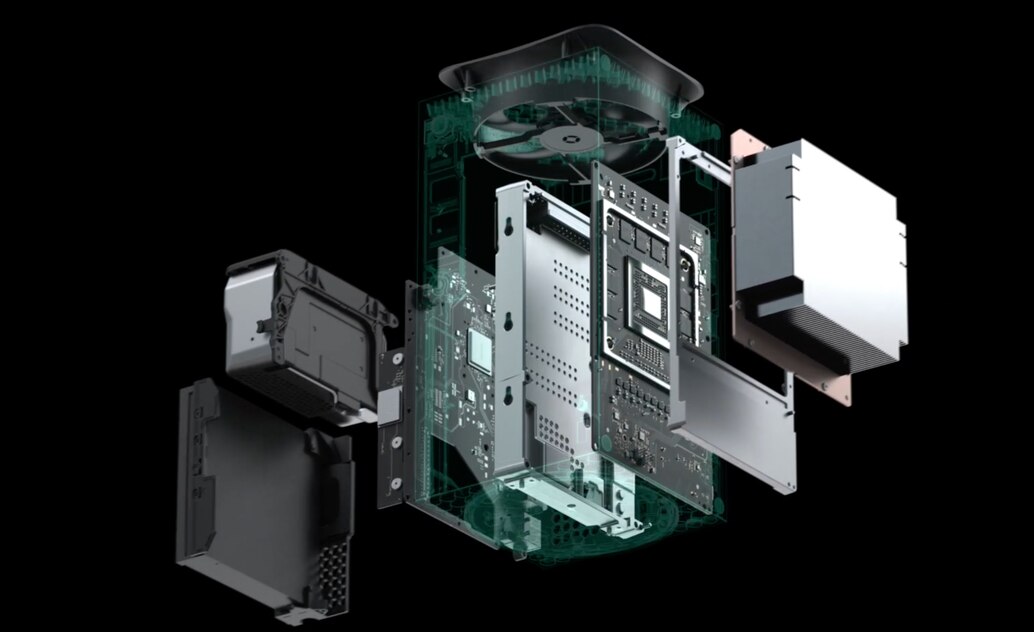
The recent and accidental Microsoft document and email dump, courtesy of its legal wranglings with the FTC, is turning out to be the mother of all console leaks. Along with game roadmaps extending out as far as 2030, including revenue forecasts for specific game titles, and juicy insights into upcoming refreshes for the Xbox Series X and S consoles, there are details concerning the next all-new Xbox console, due in 2028. The biggie? Microsoft is seriously considering a switch away from x86 CPU cores to Arm.
If that happens, it begs all kinds of question. Does that imply that Xbox is diverging away from the PC as a gaming platform? Or would the move presage a jump from x86 chips to Arm for the PC, too?
Some of the details in the leaked documents are less exciting than they superficially seem. For instance, at the time the documents were composed in 2022 Microsoft was planning on using AMD's Navi 5 graphics tech. That's two generations ahead of current AMD graphics cards.
Exciting, right? Well, yes. But given the time frames involved, it's also inevitable. The console is slated for 2028, so it's bound to use graphics hardware a few generations hence.
Moreover, the mere fact that MS plans to use a future AMD graphics technology is not only a given, it also doesn't tell us anything about the technology's capabilities. The documents do include some details revealing Microsoft's aspirations for the graphics core, including next-gen ray tracing, global illumination and AI-accelerated upscaling. But those are all pretty obvious extrapolations of existing graphics capabilities.
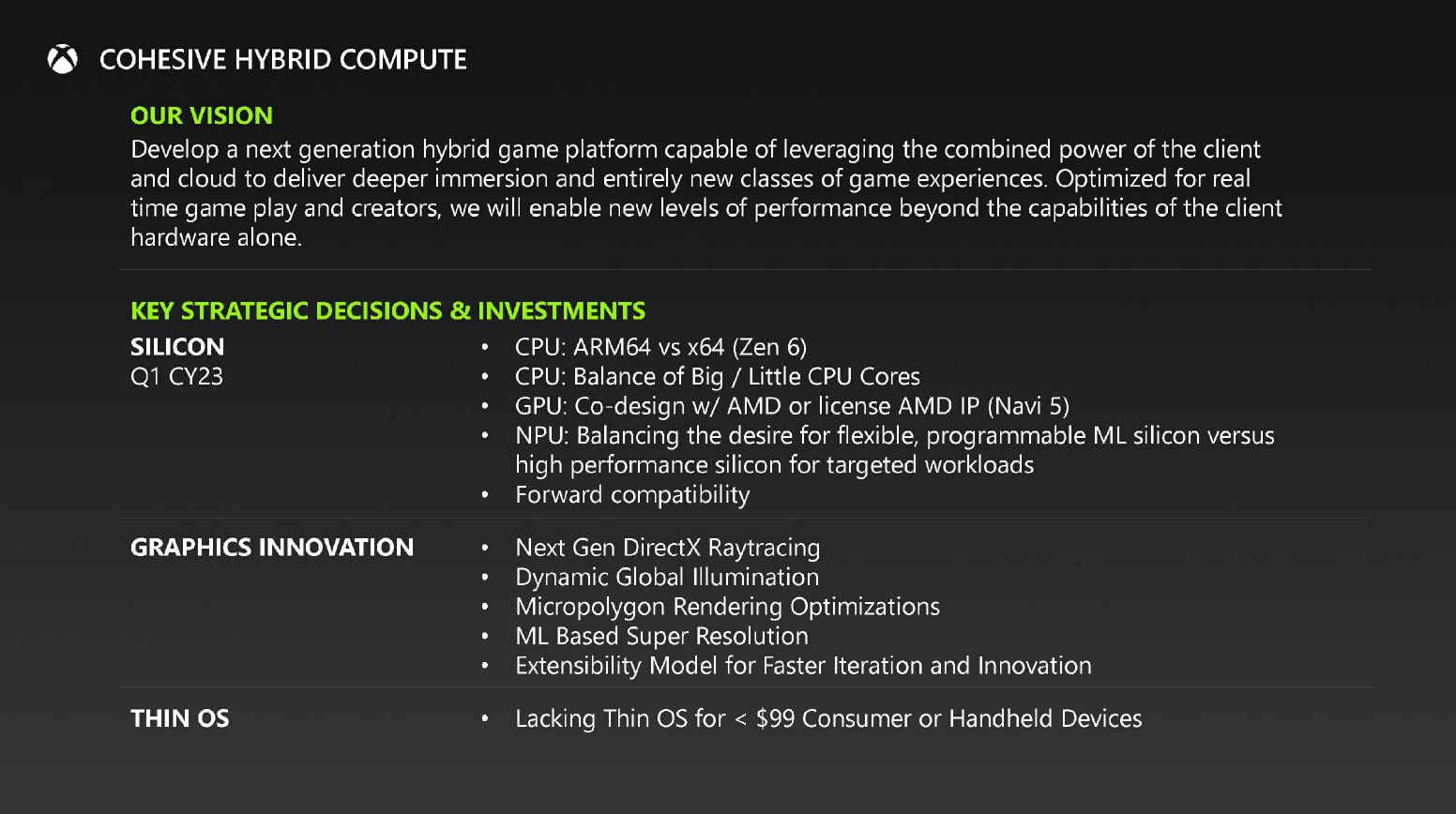
No, the only real bombshell is the explicit consideration Microsoft is giving to a switch from existing x86 CPU cores to Arm cores. Specifically, the documentation reveals three things. First, a choice between "ARM64" and "x64 (Zen 6)" cores. Second, a plan to use a hybrid bigLITTLE design with both high performance and efficiency cores. And finally, a timeline that indicates the Arm versus x86 decision has almost certainly been made by now.
It's worth noting that ARM64 and x64 represent the latest 64-bit iterations of the Arm and x86 instruction sets—otherwise known as ISAs—respectively. It's also worth noting the difference between an ISA and a CPU architecture.
The biggest gaming news, reviews and hardware deals
Keep up to date with the most important stories and the best deals, as picked by the PC Gamer team.
For instance, Intel and AMD both use the x86 (or x64 if you like) ISA. But they offer very different CPU architectures and core designs. That's important, because there are two major dimensions to any switch from x86 to Arm. Obviously there's the ISA change, but that says relatively little about the actual CPU core design. So, as big a question as "will the next new Xbox go Arm?" is "what Arm core will it use?"
Arm Holdings, the eponymous company that licences out the Arm ISA, also offers off-the-shelf Arm cores for chip makers to licence. But, generally, they haven't offered the kind of performance levels you might expect for a games console. Apple has some very powerful in-house Arm core designs in its iPhones and Macs that would almost certainly do the trick. But the odds of Apple selling those to Microsoft are pretty much zero.
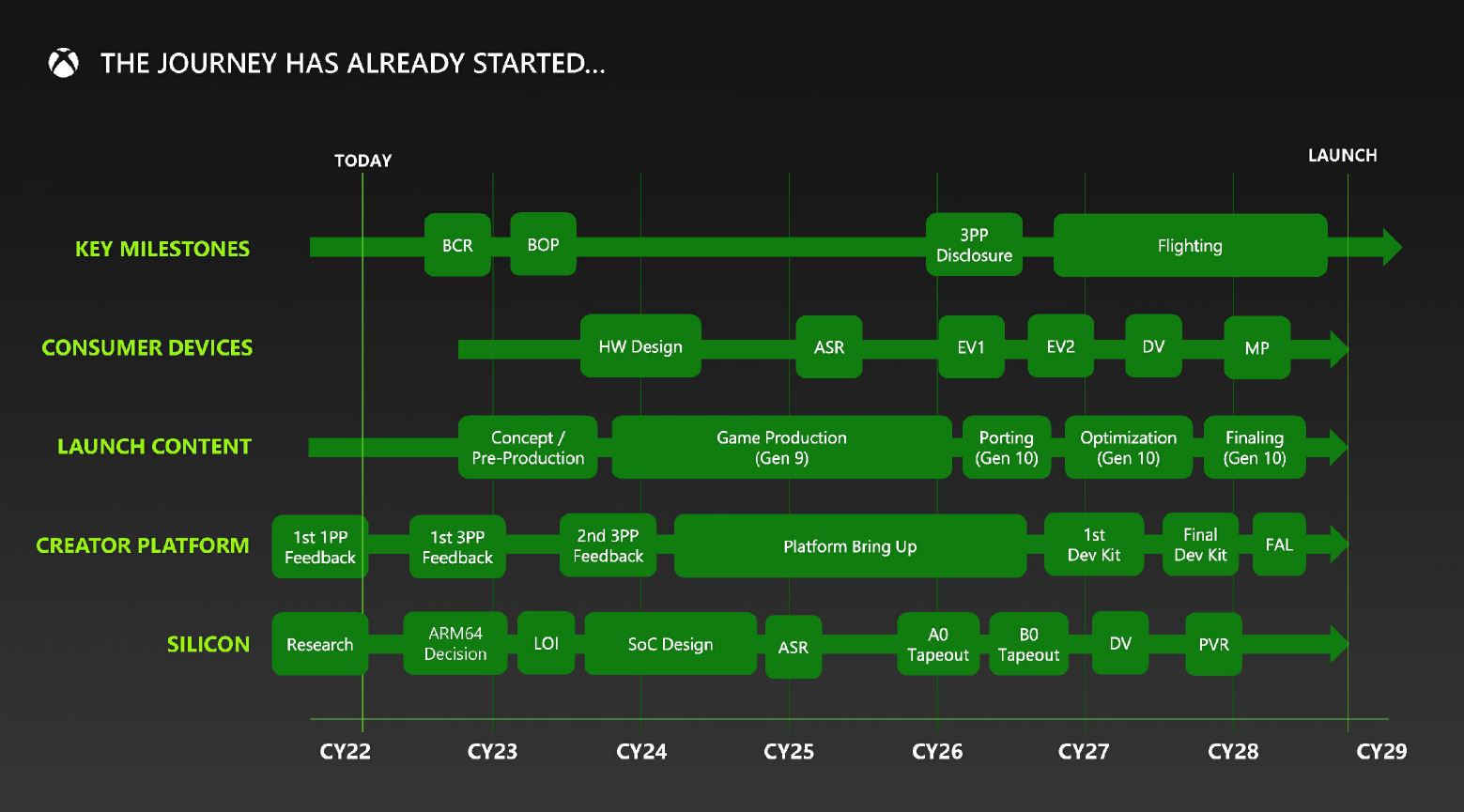
There's also Qualcomm and its Snapdragon series of chips with yet another Arm core design. Microsoft already works with Qualcomm to produce Arm-powered Surface Pro X tablets using a custom Snapdragon chip. So, there's a relevant relationship that already exists.
Of course, AMD itself could design some Arm cores for Microsoft. About a decade ago, AMD actually got quite a long way down the path of releasing its own in-house Arm core design, known as K12.
K12 was developed during the tenure of chip-design guru Jim Keller at AMD, the same period when AMD's current Zen architecture was originally conceived. According to Keller, modern Arm and x86 core designs are actually very similar deep down. "All modern computers are actually RISC machines inside. The only blocks you have to change are the decoders, so we were looking to build a computer that could do either, although they stupidly cancelled that project," Keller said of the K12 project in a talk in 2022.
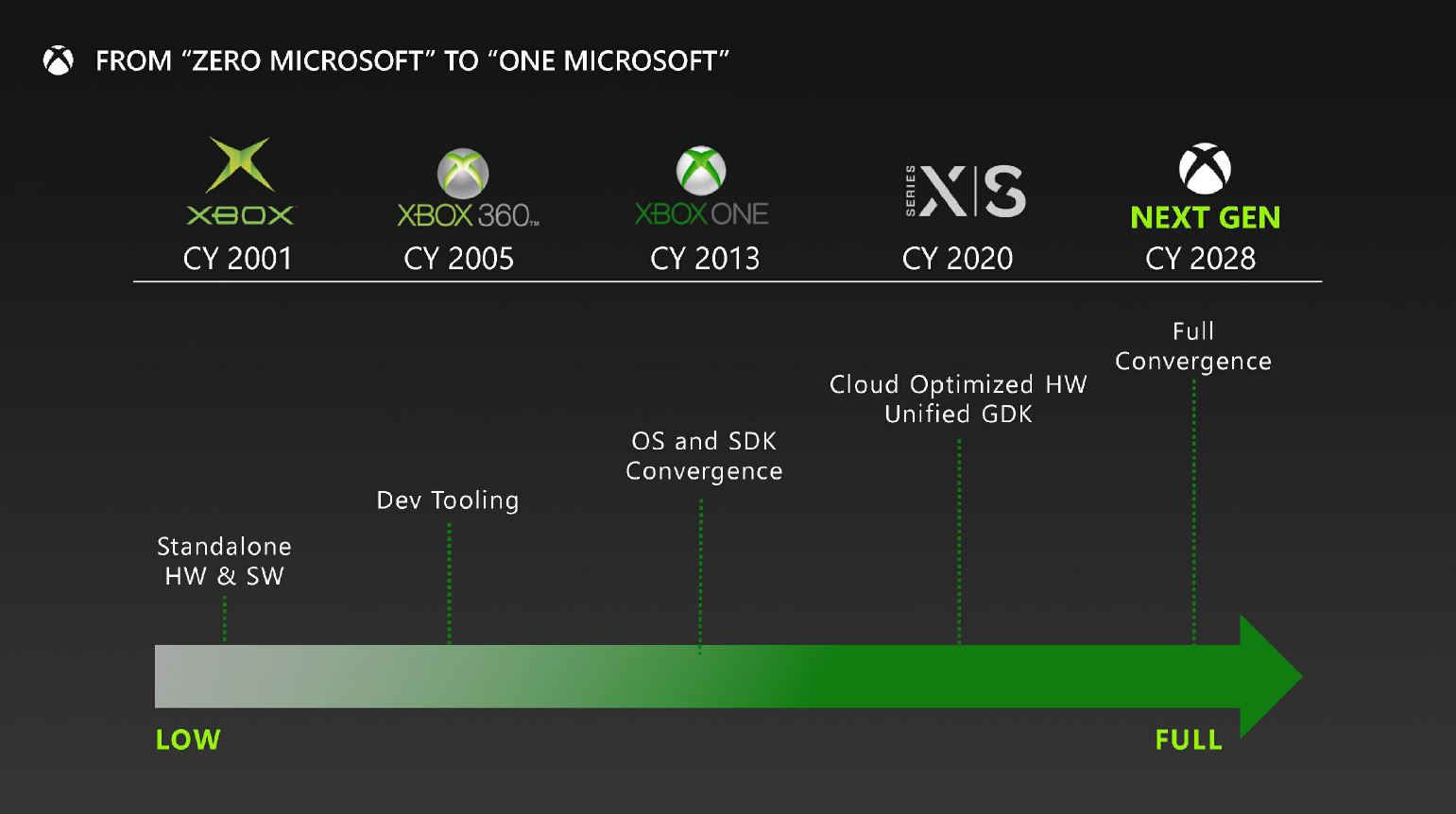
So, AMD has at least the beginnings of an Arm design sitting on the shelf. Indeed, in 2021 AMD emphasised that it is "ready to go" with Arm-based CPUs should customers desire.
Of course, Nvidia also has its own Arm-based CPU core architecture in the new Grace superchip, though Microsoft and Nvidia have reportedly not been on good terms since their relationship soured over the original Nvidia-powered Xbox console. Anyway, should Microsoft make the jump to Arm cores, it's very much an open (and critical) question which Arm cores.
But what the documents make clear is that the Arm versus x86 thing wasn't just a minor muse, but a major inflection point that merited its own waypoint on the silicon roadmap. That roadmap also indicates the decision was imminent in 2022 and will very likely have been made by now.
Of course, we've no idea which way Microsoft has gone. But let's assume for the sake of argument it chooses Arm. What will that mean?
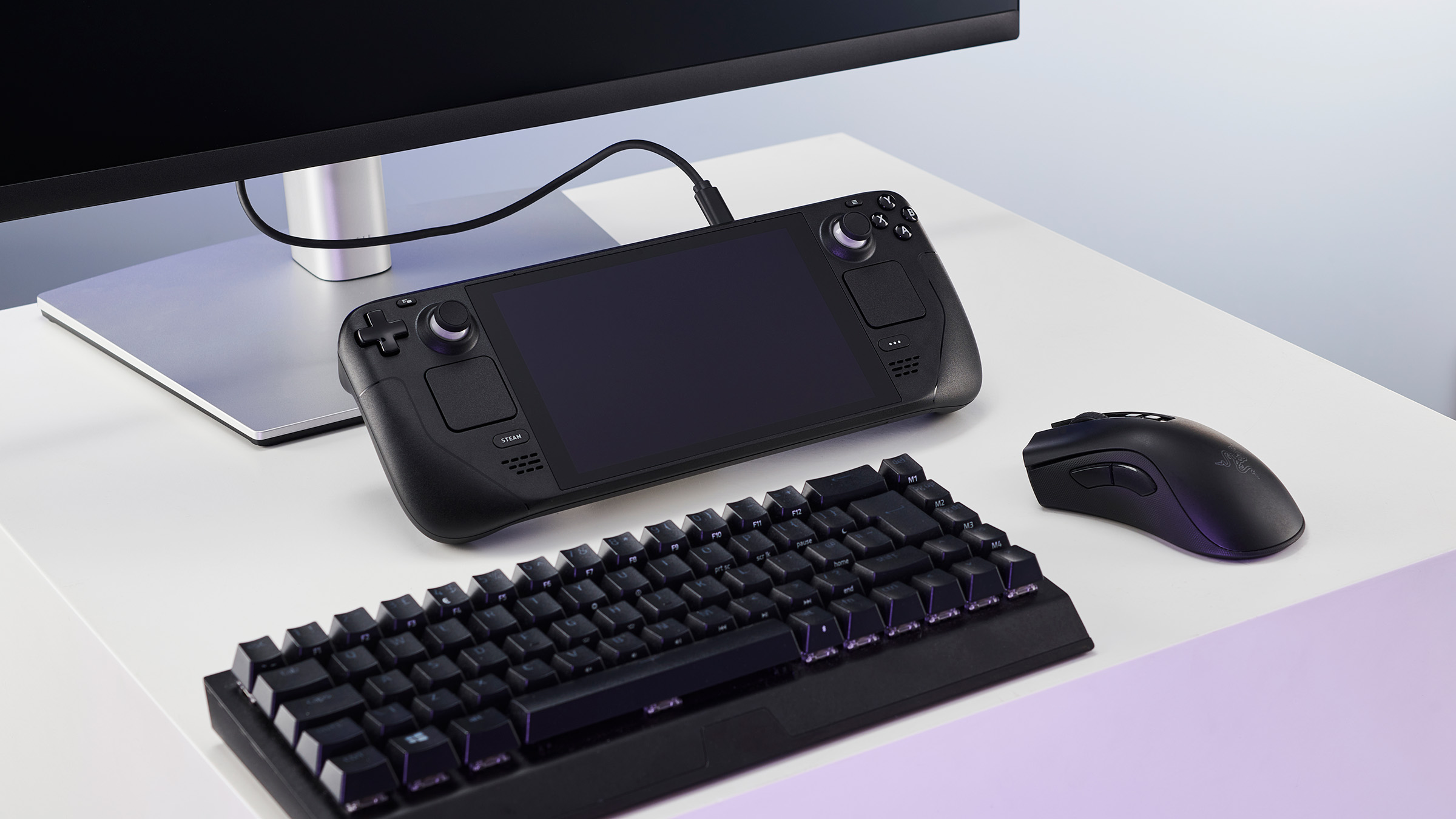
Steam Deck review: Our verdict on Valve's handheld.
Best Steam Deck accessories: Get decked out.
Steam Deck battery life: What's the real battery life?
On the one hand, it could mean that Xbox and PC diverge, just as it did with the Xbox 360 in 2005, which used IBM PowerPC cores. On the other, the move could be taken as an indication that the PC, too, is headed for a switch from x86 to Arm. That's an eventuality that some industry observers see as inevitable.
Even the basics of the argument over the pros and cons of Arm versus x86 merits its own article, let alone the intricacies. But if the Xbox does indeed make the jump to Arm, that supposed inevitability for the PC will look a whole lot more imminent.
In a final twist, it's also worth noting that ISAs in general are arguably becoming less important. Converting code on the fly to run on non-native hardware is much more viable today than ever before. So, it's not impossible to imagine that the Xbox goes Arm, the PC remains x86, and nothing much actually changes for gamers. In other words, maybe none of this really matters all that much, but it's still fascinating to see some of the thought processes at Microsoft around this stuff.

Jeremy has been writing about technology and PCs since the 90nm Netburst era (Google it!) and enjoys nothing more than a serious dissertation on the finer points of monitor input lag and overshoot followed by a forensic examination of advanced lithography. Or maybe he just likes machines that go “ping!” He also has a thing for tennis and cars.

